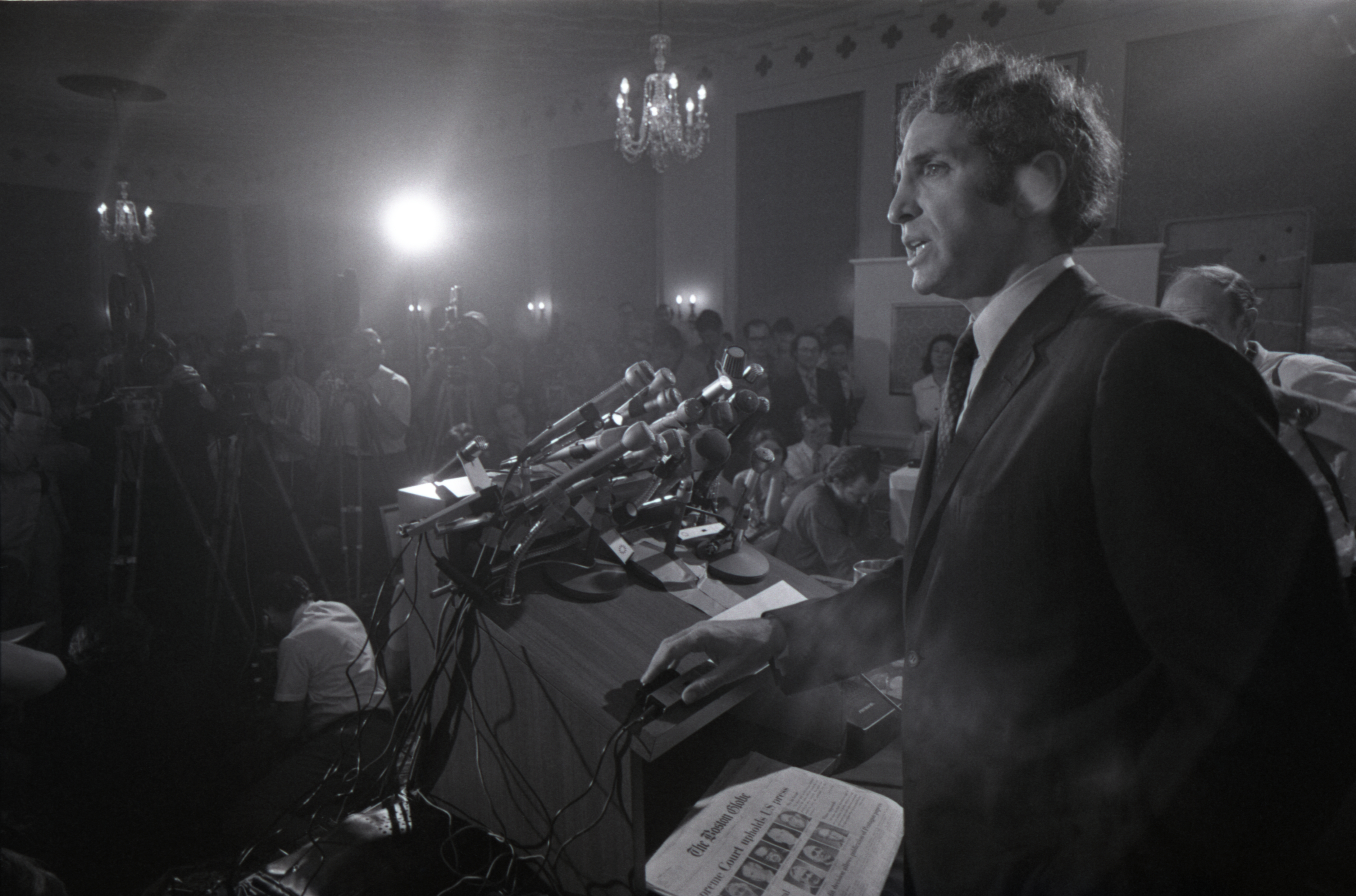The Most Dangerous Man in America: Daniel Ellsberg and the Pentagon Papers
A Judith Ehrlich and Rick Goldsmith film, in cooperation with Independent Television Service, now in theatrical release, www.mostdangerousman.org
The truly dramatic, epic story of Daniel Ellsberg and the Pentagon Papers is no secret. For nearly 30 years, it has been well chronicled in the news media and deconstructed in a shelf full of books, and in 2003 it was even the subject of a decent made-for-TV movie. Now comes The Most Dangerous Man in America, a mostly riveting, high-quality documentary that covers Ellsberg’s life, as well as the political and constitutional earthquake that was the Pentagon Papers. Winning acclaim at numerous film festivals in recent months, the film currently is in limited theatrical release and will soon be available on DVD.
The documentary, which Ellsberg narrates and also appears in as a talking head, recounts his life as a gung-ho Marine in the 1950s and early ’60s and his mercurial career after he left the Marine Corps and went to work at the RAND Corporation and then the Pentagon. It shows Ellsberg as a hawkish military theorist and planner, a situation that lasted through his civilian tour of duty in Vietnam in 1965. In passing, Ellsberg mentions that he was one of the authors of the Pentagon’s secret history of the Vietnam War.
The film shows quite well how Ellsberg— a man of extremes—became extremely disillusioned with the war. How disillusioned? “We weren’t on the wrong side; We were the wrong side,” Ellsberg says in the film. He came to believe, he says, that the Vietnam War was a “crime from the start,” nothing less than “murder,” and “had to be stopped.”
He also came to believe that the way to stop the war—and to make amends for his formerly fervent support of it—was to give a copy of the huge 7,000-page, 47-volume Department of Defense study of American decision-making in Vietnam, what became known as the Pentagon Papers, to Neil Sheehan of The New York Times.
The leak set in motion a series of events that made American judicial, constitutional and presidential history. President Richard Nixon and his administration took the unprecedented and drastic step of trying to stop the presses of The New York Times and Washington Post, only to be overruled by the U.S. Supreme Court. The Nixon White House then set up an illegal operation—the White House “Plumbers”—to stem the leaks. The Plumbers broke into Ellsberg’s psychiatrist’s office and then they burgled the Democratic National Committee’s Watergate offices, which led to the Watergate scandal and ultimately Nixon’s resignation.
The guts of this film, which relies a tad too heavily on ponderous reenactments of scenes such as the secret photocopying, deals with the aftermath of what happened after Ellsberg gave the Pentagon Papers to The New York Times in 1971. In addition to Ellsberg, who has the bulk of the face time in the film, there is a good deal of enlightening, first-person testimony from an array of people who were intimately involved in the case, including journalists, former Ellsberg colleagues, peace activists and members of Congress.
The most interesting and illuminating commentators are the late Tony Russo, Ellsberg’s co-leaking conspirator; Egil Krogh, the Nixon Plumber who was assigned to break into Ellsberg’s psychiatrist’s office; former New York Times reporter Hedrick Smith, who, with Sheehan, wrote the articles that accompanied the Pentagon Papers in June of 1971; James Goodale, the lawyer who represented the Times in the landmark First Amendment case; and former Sen. Mike Gravel of Alaska, who famously read the Papers into the Congressional Record.
The documentary’s title comes straight from the secretly recorded Nixon White House tapes, which are used to good effect in this high-quality production. They are the words of Henry Kissinger, who also called the 1971 leak “an attack on the whole integrity of the government.” President Nixon’s reaction: “We gotta get the son of a bitch!”
Originally published in the February 2010 issue of Vietnam. To subscribe, click here.





